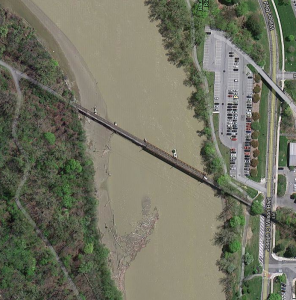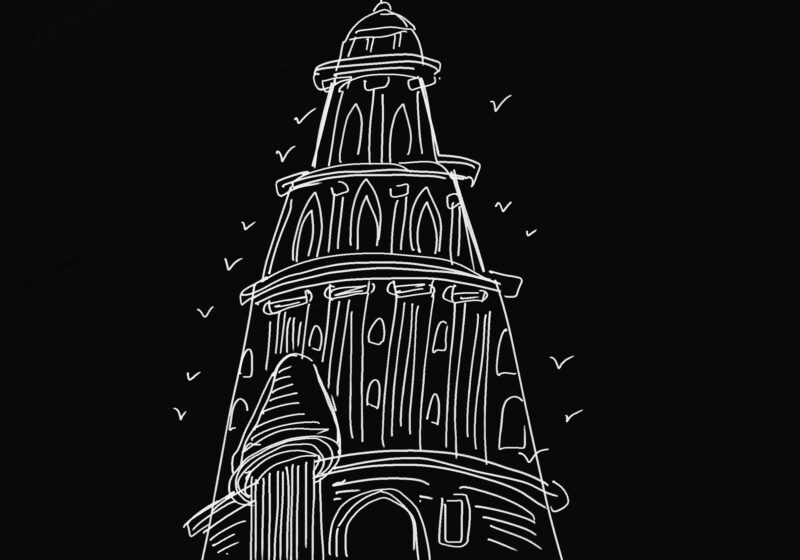
Julia Sklar, Presentation Editor
After several years of discussion, construction and fundraising, the Erie-Lackawanna Railroad Bridge Rails-to-Trails Conversion is 80 percent complete.
The project will transform the old railroad bed on Wilson Boulevard across from Hill Court into a footbridge, connecting the UR campus to neighborhoods across the Genesee River and, by extension, to downtown Rochester.
Construction is slated for completion by the end of May, with a ribbon cutting scheduled for June 29.
The project is financed jointly by the city of Rochester and New York State, as part of its Local Waterfront Revitalization Program, which are covering two-thirds and one-third of costs, respectively.
The bridge, which is 800 feet long and was originally built in 1890, will become part of the Genesee Riverway Trail System when completed, connecting riverfront trails and neighborhoods — notably the 19th Ward, the Plymouth Exchange Neighborhood (PLEX) and Corn Hill — on both sides of the Genesee River. Plans for the project date back almost 25 years, but were not prioritized until the last five to 10 when riverfront revitalization became a greater concern to many in the Rochester community, according to Thomas Hack, Senior Structural Engineer for the city of Rochester, who has been at the forefront of the project since a feasibility study was conducted in 2008.
“I think you’d be amazed at how quickly you can get to the downtown through this trail system,” Hack said. “It’s a direct line into the heart of Rochester.”
The footbridge lies half a mile south of the downtown area and provides a shorter walking route for UR students living in the Riverview Apartments to access the River Campus.
Since the city of Rochester will own the bridge, UR will not be permitted to install the blue light safety system on the bridge, which has been a cause of concern to some as the project takes concrete shape.
“We view the bridge as part of the existing trail system and will encourage those who use the bridge to exercise the same precautions they would employ elsewhere on the system,” Associate Vice President for University Facilities and Services Richard Pifer said, adding that such precautions include using the recreational trails during daylight hours, traveling in pairs or small groups and being aware of one’s surroundings.
Pifer, who said that the project was delayed by a variety of “construction-related issues,” believes that the bridge will be “an example of the integration of the ebb and flow of University life and life in the adjoining neighborhoods.”
“It is one more positive link to the west side of the river,” he said.
According to Pifer, UR “responded favorably” when contacted by the city about the project, citing University and community use of the existing trail network for recreational purposes.
But Pifer does not think that the bridge will have any significant impact on the numbers of students who live off campus.
“There is very little housing in the immediate vicinity of the west side of the bridge,” he said. “Crossing the Ford Street bridge to the north or the pedestrian bridge or Elmwood Bridge to the south offers very direct access to the River Campus and in each case those bridges are in closer proximity to housing that may be available. Accordingly, I doubt that the new bridge will have a significant increase on housing decisions.”
For similar reasons, Pifer added that he does not believe that the bridge will change the number of students who go downtown.
“Whether one crosses the new Rails-to-Trails bridge and uses the path on the west side of the river or uses the path on the east side of the river and crosses the Ford Street bridge, the distance to downtown is the same,” he said.
Hack, however, expressed optimism about the potential of the bridge for “connecting people and communities,” for serving as a “major economic catalyst” and for benefiting UR through an expansion of housing and business opportunities.
“UR will get substantial benefit, there’s no doubt about it,” he said. “There’s no doubt that students will be using [the bridge] to connect into the downtown core.”
Buletti is a member of the class of 2013.




